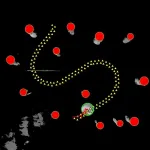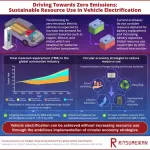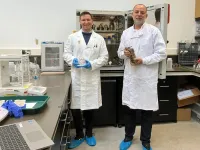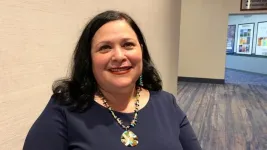Evaluating an older adult with a head injury in the emergency department (ED) requires careful assessment due to the increased risk of complications such as intracranial hemorrhage. There also is heightened concern for older patients taking anticoagulants or blood thinners who sustain a head injury because of the risk of delayed intracranial hemorrhage (ICH).
ICH is a type of traumatic intracranial hemorrhage that takes place in various areas of the brain. A delayed ICH can occur up to several weeks after the injury, but usually within 48 hours. As such, this risk has prompted some providers to admit these patients to the hospital for observation and repeat CT scans, the imaging modality of choice for evaluating acute head injuries.
Previous reports have suggested rates as high as 7.2% for delayed ICH in older adults on anticoagulants who sustain a head injury, sparking debate over management practices. Currently, the need for observation and routine follow-up diagnostic CT scans remains controversial.
Now, a new study by researchers at Florida Atlantic University’s Schmidt College of Medicine challenges previous higher estimates of delayed ICH incidence in this patient population and provides important data to inform clinical practice in the ED.
Researchers conducted a prospective cohort study aimed to assess the actual incidence of delayed ICH in geriatric ED patients on anticoagulants, comparing it across different types of anticoagulant medications. Study subjects were placed into four groups by anticoagulant use: no anticoagulant use; Warfarin; direct oral anticoagulant (included dabigatran, rivaroxaban and apixaban); and Heparinoid (included heparin and enoxaparin).
Results of the study, published in The Journal of Emergency Medicine, show that out of 3,425 patients enrolled in the study, 0.4% (13 patients) experienced a delayed ICH, a significantly lower rate than previously reported. There were no differences in rates of delayed ICH between those who had been prescribed anticoagulants versus those who had not.
These findings suggest that geriatric head trauma patients in the ED taking Warfarin or other anticoagulants prior to their injury do not need to be admitted to the hospital for 24-hour observation and do not require routine repeat CT scans.
“If anticoagulated head trauma patients had this relatively high frequency of delayed intracranial hemorrhages previously reported, then routine repeat head CT scans in all cases at 24 hours would require a substantial change in current practice in emergency departments,” said Richard Shih, M.D., senior author and a professor of emergency medicine, FAU Schmidt College of Medicine. “Because of this controversial issue, our objective was to perform a larger prospective study to validate or refute these findings.”
The study was conducted at two hospitals from August 2019 to July 2020, in 3,425 patients aged 65 years or older with acute head injury. Follow-up included telephone calls and chart reviews to detect delayed ICH.
Among the 3,425 patients included in the analysis, the most common mechanism of injury in all groups was a ground-level fall (77.9% of all cases). A motor vehicle accident (6.2%) was the next most common with all others causes representing less than 7% of cases.
“Our study provides important data for clinicians managing older patients on anticoagulants who present with head trauma, potentially influencing guidelines and practices regarding observation and imaging protocols,” said Shih.
Study co-authors are Scott M. Alter, M.D., an associate professor of emergency medicine and assistant dean for clinical research; Joshua J. Solano, M.D., an associate professor of emergency medicine and clerkship director; Gabriella Engstrom, Ph.D., senior project coordinator; Mike Wells, Ph.D., research assistant professor, Department of Emergency Medicine; Lisa Clayton, D.O., chair, Department of Emergency Medicine, an associate professor, assistant dean for graduate medical education and program director, emergency medicine residency; Patrick G. Hughes, D.O., an emergency medicine physician; Lara Nicole Goldstein, M.D., Ph.D., an emergency medicine physician; Faris K. Azar, M.D., a general surgeon; and Joseph G. Ouslander, M.D., a professor of geriatric medicine, all within the FAU Schmidt College of Medicine.
The research was supported by The Florida Medical Malpractice Joint Underwriting Association Grant for Safety of Health Care Services awarded to Shih (Grant RFA #2018-01).
“This project would never have occurred without the support of The Florida Medical Malpractice Joint Underwriting Association, whose main goal is to improve patient safety in Florida,” said Shih. “Given that so many of our older residents are on anticoagulants and often fall and injure their heads, this diagnostic issue is an important one for physicians treating these patients in the emergency department.”
- FAU -
About the Charles E. Schmidt College of Medicine:
FAU’s Charles E. Schmidt College of Medicine is one of approximately 157 accredited medical schools in the U.S. The college was launched in 2010, when the Florida Board of Governors made a landmark decision authorizing FAU to award the M.D. degree. After receiving approval from the Florida legislature and the governor, it became the 134th allopathic medical school in North America. With more than 70 full and part-time faculty and more than 1,300 affiliate faculty, the college matriculates 64 medical students each year and has been nationally recognized for its innovative curriculum. To further FAU’s commitment to increase much needed medical residency positions in Palm Beach County and to ensure that the region will continue to have an adequate and well-trained physician workforce, the FAU Charles E. Schmidt College of Medicine Consortium for Graduate Medical Education (GME) was formed in fall 2011 with five leading hospitals in Palm Beach County. The Consortium currently has five Accreditation Council for Graduate Medical Education (ACGME) accredited residencies including internal medicine, surgery, emergency medicine, psychiatry, and neurology.
About Florida Atlantic University:
Florida Atlantic University, established in 1961, officially opened its doors in 1964 as the fifth public university in Florida. Today, the University serves more than 30,000 undergraduate and graduate students across six campuses located along the southeast Florida coast. In recent years, the University has doubled its research expenditures and outpaced its peers in student achievement rates. Through the coexistence of access and excellence, FAU embodies an innovative model where traditional achievement gaps vanish. FAU is designated a Hispanic-serving institution, ranked as a top public university by U.S. News & World Report and a High Research Activity institution by the Carnegie Foundation for the Advancement of Teaching. For more information, visit www.fau.edu.
END







